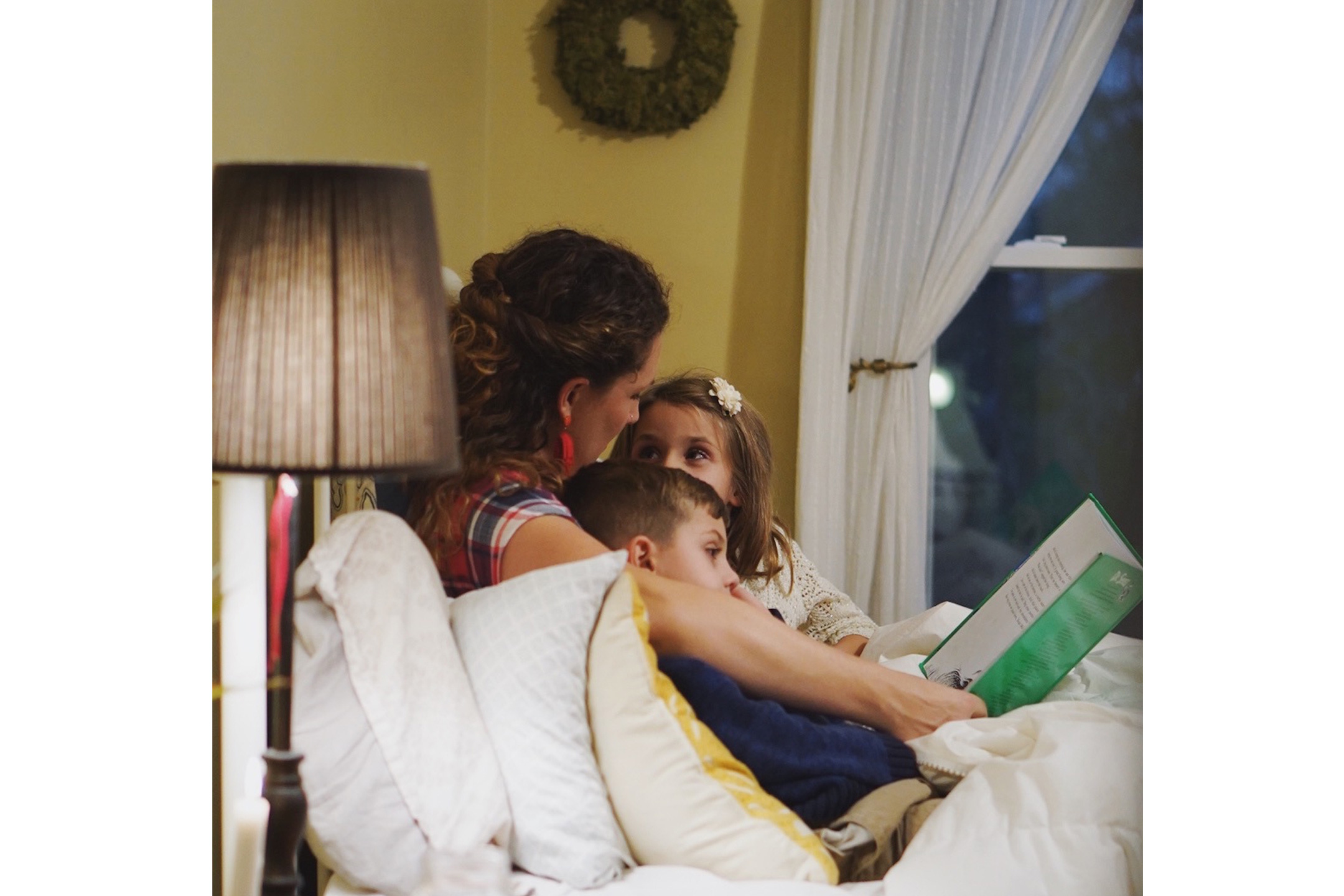
15 Aug Looking at Literacy: Bedtime Reading
Joelie Hancock reports that while most schools and education departments provide information for parents on how to support the learning of schoolchildren, similar details are not readily available to the carers of preschoolers, even though it is widely understood that these early years are when the foundations of literacy learning are established.
Given our busy lives, it barely seems possible to fit in another regular activity. Time for brushing teeth is hard enough! But what if an activity can prepare your child for sleeping, bring you and your child closer, and give him or her a head start for learning? Bedtime reading can do all this and more.
You don’t have to be a good reader and you should avoid an artificial ‘reading voice’. Of course, having special voices for the big bad wolf, the giant and the lost kitten will add to your listener’s enjoyment. And changing to very soft and very loud when it’s appropriate adds to the suspense and excitement.
The pictures are where every book reading begins. Focusing on the cover can open up all sorts of discussion: ‘Now what’s this about?’ Make sure you allow plenty of time for looking, thinking and talking. With the youngest children, point to the pictures on the cover: ‘Can you see the bird? Show me.’ The cover can lead into the child’s own experiences: ‘We saw some birds on the lawn today, didn’t we? Were they the same as this one?’ ‘Do you think that’s a friendly bear?’
Older preschoolers can anticipate what the book is about: ‘Here it says Furry Friends. What do you think we’ll find inside?’ When you turn a page, give your child time to respond to the pictures before asking any questions, and follow the child’s lead. Talking about the pictures connects the book with the child’s experiences: ‘Have you ever seen a rabbit like that one? What was it doing? Let’s see what this rabbit does.’
Readers need to know that the print tells us what is going on in a book. ‘Now let’s see what the words tell us…’ Indicate this, then point to the first word and start reading. Occasionally point to particular words – those that are repeated or in large print – and show that you are reading from left to right and down the page. Enjoying the story is what it’s all about, so attending to the print will only be incidental until your preschooler shows particular interest in letters and the words.
But once that interest takes hold, understanding and enjoying the text comes to the fore and you are in the perfect position to help – with the pictures as your support. It may not have been obvious that Sam is the funny chap holding the plate, or that a ‘thimble’ is the little cap on the old woman’s finger and it helps her to sew. With books, children can safely explore the world and its possibilities, with you as their guide. They soon learn to use the pictures to help them understand the words and know that you are there to answer their questions.
You’ll find it well worth beginning a bedtime reading routine before your child’s first birthday. Some find it works in the first month. As soon as your baby shows an interest in focusing on the pictures, you can both look forward to that lovely time of the day when, after the bath and dressed for bed, he or she curls up on your lap, all warm and sweet-smelling, ready to share some books. The number of books will depend on your baby’s attention – as well as the time you have to enjoy this shared experience.
‘You choose one and I’ll choose one,’ is a good pattern for bedtime reading. Have the books ready before you sit down together so that the calming experience is not interrupted while you look for more. Make sure your child is close and comfortable and that there are minimal distractions.
A baby’s first books will contain nursery rhymes, or be about familiar objects, people and animals and have few words. Children love rhythm and rhyme so search out the authors who use these well. Dick Bruna and Pamela Allen books, with their strong, clear pictures, work well, as do
lift-the-flap books, such as the Spot series by Eric Hill, and stories that follow an animal on an adventure, such as the Harry books by Gene Zion and Hattie and the Fox by Mem Fox. Many books are specially written for bedtime reading, with gentle rhythms and rhymes and ending with the book’s child or animal falling asleep. Borrow books from the library to help you find the sorts of books that engage your particular child.
As reading to children is such a pleasurable way of introducing them to the wonders of the world, the richness of language and the closeness of sharing, don’t leave it just for bedtime. Have books handy throughout the day and follow your child’s lead in setting the foundations for a lifetime love of books.
Joelie Hancock is an author and has been a literacy education consultant who lectured in language and literacy education at Flinders University for more than 20 years.

